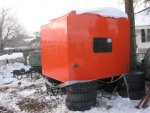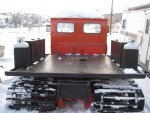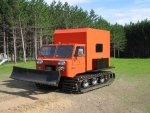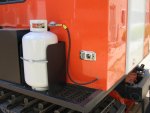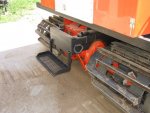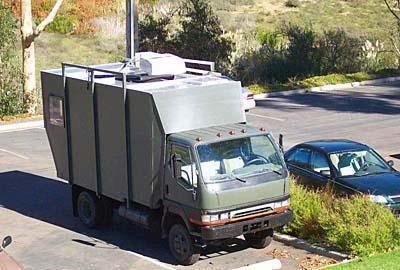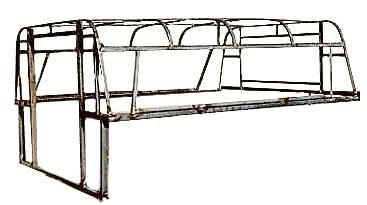A great resource for camper construction is Stephen Stewart's
description of his Unimog construction project
http://www.unimog.org.uk/mymog/
See also Stephen's description of camper types and equipment
on the Silk Route Motorcaravan Club's web site
http://www.xor.org.uk/silkroute/equipment/choosevan.htm
There are lots of different materials used in a camper.
The early campers used a wooden frame and plywood
siding. I think Alaskan Campers still uses a wood frame
construction.
The problems with wood are heavy weight, and the potential
for rot if the wood frame gets wet. Wood construction is more
flexible, however, so it can "roll with the punches." The
Alaskan Campers last just about forever.
Here's a camper made entirely of marine-grade plywood
Aluminum framing is popular today. There are two approaches.
The first is to build an interior framework, and cover it with
lightweight material. Four Wheel Camper is a good example
of this type of construction.
Most companies use aluminum instead of steel tubing. But
there's no reason why you can't use steel. A good "birdcage"
design won't be too much heavier than the aluminum structure.
Here's the steel frame used by Caravan Campers for their pickup
bed cap
The Hymer Eriba Touring caravans used to be made with a
steel tube frame. Newer models are fiberglass, I think.
The second approach with aluminum is to build an exoskeleton
and attach the sidewalls from the inside. Gary Wescott's Turtle V
is built this way.
http://www.turtleexpedition.com/images/t5TCframe.htm
Aluminum is generally welded, but there are some adhesives used
in the construction of aircraft wings that can work well in a camper,
particularly to attach the wall covering to the frame.
The monocoque shell is another option. In this approach,
the walls have less internal support. The wall material provides
most of the strength. A fiberglass shell is used by Bigfoot
Industries (now closed), Earthroamer, and the Adventure Learning
Foundation. There are plenty of fiberglass trailer campers
built 50 years ago still in use today.
This is the Adventure Learning Foundation camper. The basic
shell, which is like a seamless upside-down bowl, was made by
Unicell in Toronto.
The Supercamperos custom camper is a monocoque shell made of
some sort of fiber-reinforced plastic sandwich material, if I remember
correctly.
http://www.thesupercamper.blogspot.com/
The campers from Unicat, and the shell built for Stephen Stewart, use
similar materials.
Once you have the shell of the camper built, the interior cabinets
and shelves are usually installed with screws to the walls, like
you would build a kitchen at home. One new trend is to cast some
or all of the interior shelves and bulkheads in one piece with the fiberglass
shell. This provides extra strength and simplifies construction. The new
All Terrain Warriors "Scout" model is an example of this approach.
http://www.allterrainwarriors.com.au/index.php?option=com_content&task=view&id=19&Itemid=25
Please keep us informed about your progress.
Chip Haven

